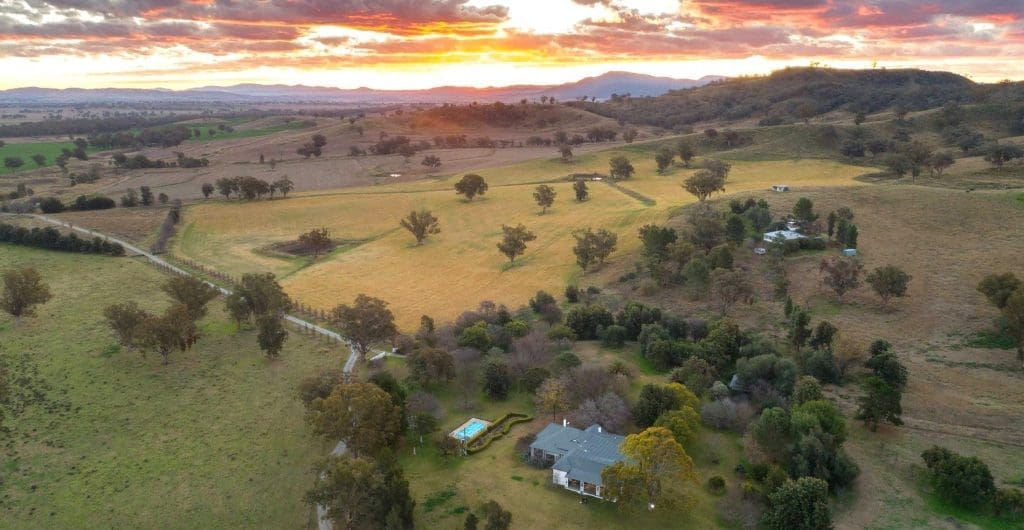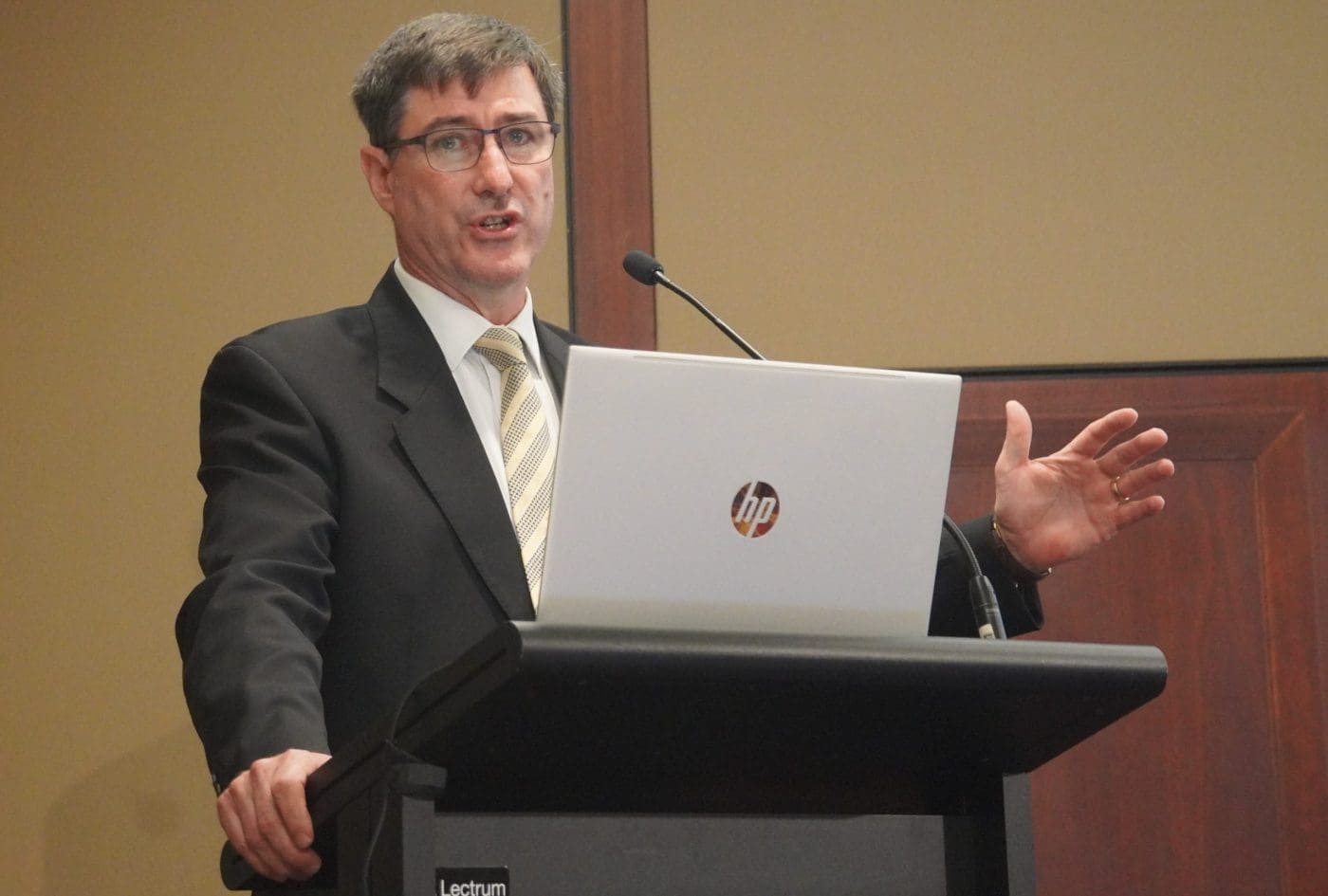
THE first quarter of 2023 witnessed a sharp surge in rural property listings, but are the pressures of rising interest rates, softening commodity prices, higher input costs and the difficulty of finding good labour impacting on buying and selling decisions?
This week’s property review examines the current market situation.

Simon Cudmore
LAWD director Simon Cudmore said compared to previous years, the number of properties currently on offer was significant.
“High prices, record sales and considerable interest in the ag space are giving producers the incentive to bring forward their exit strategies or realise capital, capturing the significant gains of recent years,” he said.
Mr Cudmore noted buyer engagement has calmed and the franticness witnessed last year has dissipated.
“The market is being impacted by higher interest rates and a drop in livestock commodity prices. On the flip-side, the exchange rate has also fallen which means overseas funded operations are finding Australian rural holdings more attractive.
“There is likely to be a higher level of engagement from international investors moving forward. In the meantime, blue ribbon assets continue to attract strong levels of interest from all buying sectors,” Mr Cudmore said.
A Queensland agent (who did not want to be named) told Beef Central caution is creeping into the rural property market.
“Despite a good season, rising interest rates, softer commodity prices and the cost of doing business – in terms of higher freight and fuel costs and staff shortages – are contributing to a more negative outlook,” he said.
“Recently, a bloke told me his feeder steers were back about $600 on last year. That’s a big hit percentage wise and equates to a 25 to 30 percent reduction in surplus income.”
He said those factors are creating a lack of confidence when it comes to purchasing property.
“There is plenty of inquiry but limited inspections. Potential buyers who view the glass as ‘half full’ will engage but those who view the glass as ‘half empty’ will pull out.”
Ian Robinson, Robison Sewell Finance
Ian Robinson from Robinson Sewell Finance suggested the property market is never linear.

Ian Robinson
“It is like a slinky. There are quiet periods when there are more buyers than listings and there are times when there are plenty of listings and not enough buyers. I guess we are currently in that second phase.”
Mr Robinson said property listings are pushed up by a confluence of economic and personal forces and there are certain headwinds playing out that are pulling back the enthusiasm for acquisitions.
“Our agri clients are mainly concerned about the cost of running a farm in terms of rising inputs and the difficulty of finding good labour. Softening commodity prices are impacting producers more than rising interest rates.”
Conversely, Mr Robinson said corporates on the whole used limited debt capital to make farm acquisitions. They tend to be more of a cash buyer, so they are not so interest rate sensitive.
He said during the peak of the market frenzy, the property market experienced many different layers of buyers.
“There were the mums and dads or established generational famers who were expanding; there was new money from city investors seeking ag exposure (absentee landlord type arrangements); and domestic or offshore corporates.”
Mr Robinson said when those capital flows are heading in the one direction, they push up the market.
“What we are seeing at present is the repatriation of some of those flows. For example, the family operators have now transitioned into consolidation mode. Unless the neighbouring property or a strategic block becomes available, they are not too enthused about buying a property 40km down the road.”
Mr Robinson said while local producers have the capability to purchase, they are presently sitting on their hands.
 “The mum and dad market has the firepower in terms of strong balance sheets and strong historical financial performance (cashed up in farm management deposits or have paid down their debt) but they are seeking stability.”
“The mum and dad market has the firepower in terms of strong balance sheets and strong historical financial performance (cashed up in farm management deposits or have paid down their debt) but they are seeking stability.”
He said they wanted to ensure that the key economic indicators have reached a steady state so they can make good, informed, definite decisions going forward.
“Many of the price trends I have spoken about are currently quite volatile and in transition, so stability in terms of consistent inflationary impacts (such as input costs and commodity prices) is something that most producers are seeking.”
Mr Robinson said most producers did not like to sell up unless they are either exiting the industry or they are at the end of a runway for family or economic reasons and it is the only viable option for them.
“Generational farmers have all endured various forms of financial hardship in the past such as adverse commodity prices, fires, floods and droughts and are naturally quite resilient. They know they can get through these events and come out the other side.”
“The same goes for those who purchased at the peak of the market and realise that those numbers may not be quite staking up in today’s market, but they will when the tailwinds shift back in their favour.”
Tim Lane, Herron Todd White
Tim Lane, national client manager – agribusiness and advisory at Herron Todd White, said the last four years had experienced exceptional land value growth across all regions and commodity classes in rural Australia.

HTW’s Tim Lane
“This is on the back of the positive aspects of cheap money, strong commodity prices and better to good seasons. However, at some point there has to be a slowdown initially in activity as the above drivers reset.”
One agent suggested the rural property market had pushed past the peak and was now sitting at quarter-past-one on the property market dial.
Mr Lane said the market may have peaked, but it is a wide-ranging statement.
“If you put the available property into A, B and C grade classes on a rising market, the C grade assets (as a percentage of value growth) often outperform the A grade assets,” he said.
As the market rests, then A grade properties tended to hold their value relative to C grade assets.
“This is where we are currently in the cycle, with buyers being more cautious around stepping into the market. Good assets will still attract strong interest, just not the hectic interest of the past 12 to 24 months.”
In the light of higher interest rates, softer commodity prices and labour shortages, Mr Lane said the market reflected the overall cost of operation and return opportunity.
“If costs have increased significantly and potential income forecast to be down, then that reduces the demand side of the transaction. However, what is clear, active buyers are fully funded by their lenders and able to still execute within agreed parameters.”
Mr Lane said smaller bolt-on blocks that can integrate with existing holdings can still achieve strong results, but some larger standalone assets seeking to take on more debt may find it difficult to access the scale of capital needed to cover that cost.
Despite talk about a lower exchange rate attracting more overseas buyer engagement, Mr Lane said international capital has always been present in Australian agriculture.
“The dollar moves around, but investment decisions factor in those risks. It certainly does not hurt from their perspective. New capital chasing land for carbon will add to the demand side.”
Mr Lane said it was important to note that most of the international and new capital was not debt funded.
“However, those same investors still need an effective return on their money, so any buying decision is made through that lens. Often international capital has a higher hurdle rate of return than the family farm operator.”
He said there was no evidence to suggest some producers have overextended themselves and are selling up as a result.
“Many operators have done very well the past three to four years and their equity positions are by and large, very strong.”
“If dry conditions were to set in for an extended period and the cost of debt and input costs remain elevated coupled with lower commodity prices, then some may need to exit but I feel that is well down the track from where we are today,” Mr Lane said.
